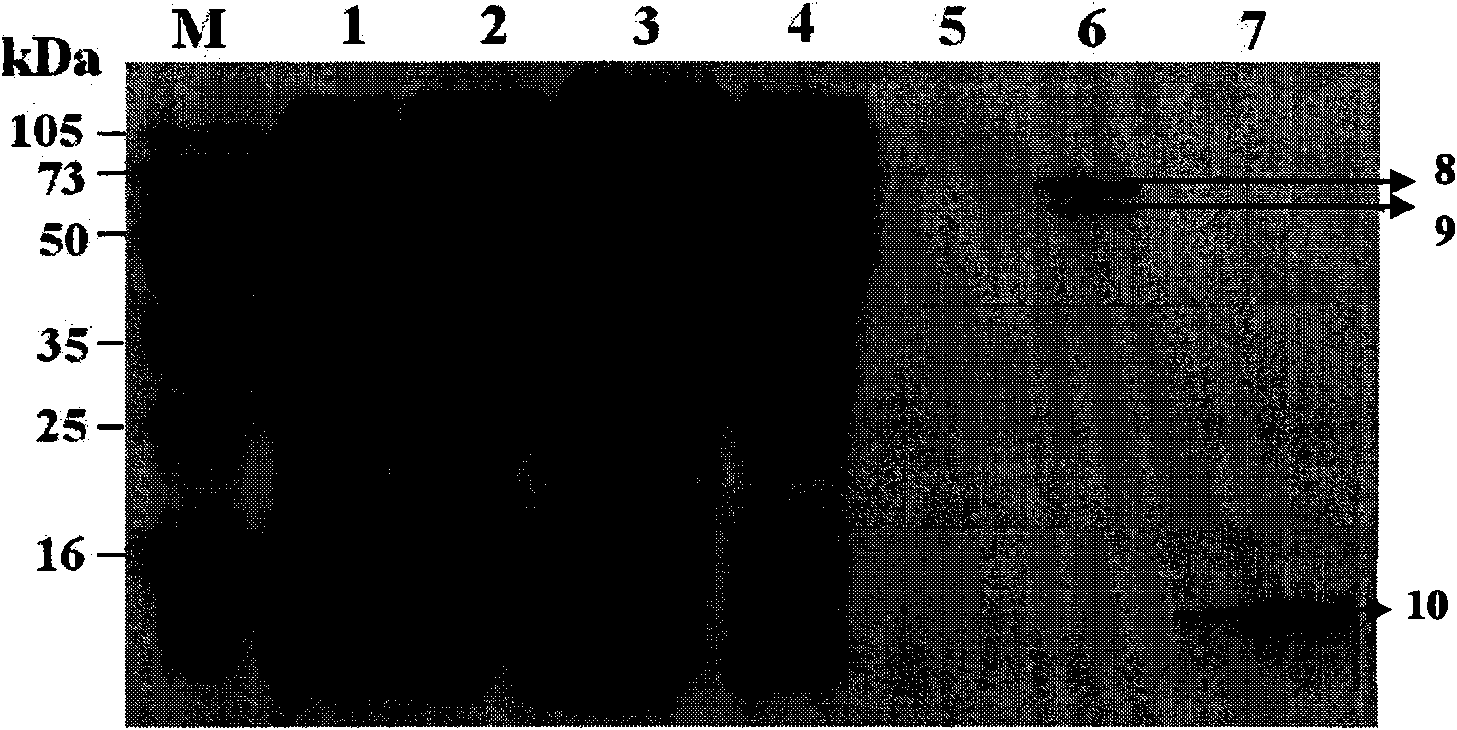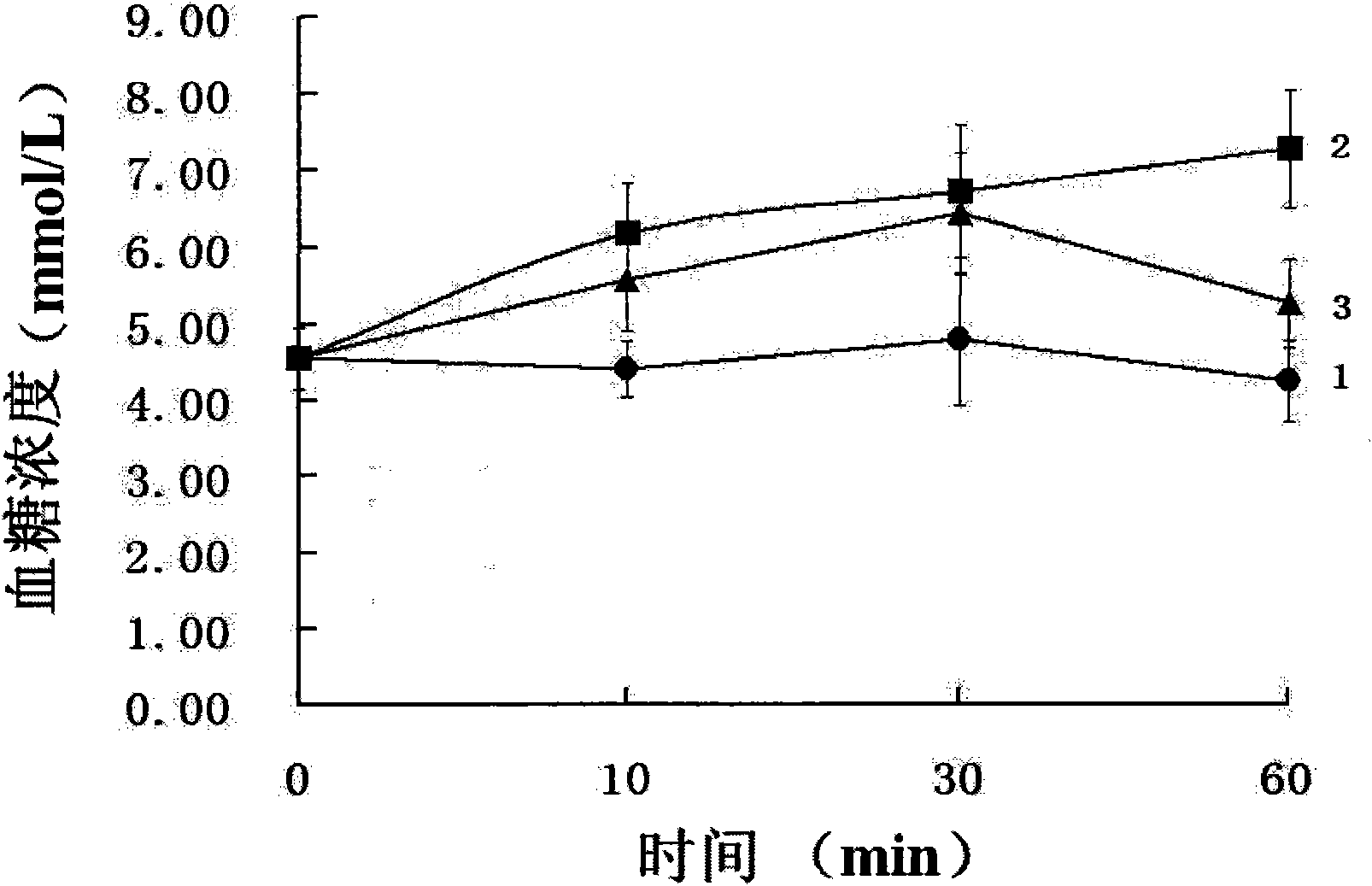Restructured fusion protein PTD-MAX and expression method and application thereof
A PTD-MAX and fusion protein technology, applied in the field of genetic engineering, can solve the problems of maxadilan polypeptide delivery and no related reports, and achieve the effects of improving drug access, promoting nerve growth, and expanding the scope of application
- Summary
- Abstract
- Description
- Claims
- Application Information
AI Technical Summary
Problems solved by technology
Method used
Image
Examples
Embodiment 1
[0048] Embodiment 1 Preparation of recombinant fusion protein PTD-MAX
[0049] The preparation of the recombinant fusion protein PTD-MAX in this embodiment includes the following steps:
[0050] 1. Amplification and cloning of PTD-MAX gene:
[0051] First design and synthesize 3 primers:
[0052] Primer 1, the nucleotide sequence of which is shown in SEQ ID NO: 1;
[0053] Primer 2, the nucleotide sequence of which is shown in SEQ ID NO: 2;
[0054] Primer 3, the nucleotide sequence of which is shown in SEQ ID NO:3.
[0055] In the above three primers, N represents the protected base, CATATG is the NdeI restriction site, CTCGAG It is the XhoI restriction site.
[0056] Two-step PCR:
[0057] (1) The first step of PCR, using the existing maxadilan gene as a template, the PCR reaction system is: primer 2 (0.01A / μL) 1 μL, primer 3 (0.01A / μl) 1 μL, plasmid containing maxadilan gene 1 μL, dNTP 10μL, 10×TaKaRa Ex Buffer 10μL, TaKaRa Ex Taq Enzyme 1μL and H 2 O 76μL; PCR re...
Embodiment 2
[0072] Example 2 Effect of transient action of recombinant fusion protein PTD-MAX on blood glucose concentration in KM mice
[0073] Experimental materials: Clean grade (SPF grade) KM male mice, weighing 20±3g, were randomly divided into groups according to body weight, with 8 mice in each group.
[0074] This embodiment is divided into three groups: PTD-MAX group, maxadilan group and blank control group.
[0075] After the mice were fasted for 12 hours, intraperitoneal injections were made to KM male mice (the PTD-MAX group was injected with 50nmol / kg of recombinant fusion protein PTD-MAX, the maxadilan group was injected with 50nmol / kg of maxadilan protein, and the blank control group was injected with 50nmol / kg of physiological saline).
[0076] Before injection (0 min) and after 10 min, 30 min, and 60 min after injection, blood was collected from the tail of the mice, and blood sugar changes within 60 min were measured with an automatic blood glucose analyzer (OneTouch Ul...
Embodiment 3
[0078] Example 3 Functional Detection of Recombinant Fusion Protein PTD-MAX Penetrating Cell Membrane
[0079] Use FITC (fluorescein isothiocyanate) labeling kit to fluorescently label PTD-MAX and maxadilan. When CHO cells grow to 80% confluence, remove the original medium, add serum-free medium, and add FITC-labeled PTD-MAX-FITC and maxadilan-FITC, to a final concentration of 200nmol / L, add an equal volume of FITC labeling solution as a control, incubate the cells for 1 hour, rinse the cells with PBS 4 times, 10min each time, to remove free protein. Add 1 mL of ice-cold methanol, fix at -20°C for 5 min, then fix with 1 mL of 1% formaldehyde, fix at room temperature for 10 min, wash with PBS several times, and observe with an inverted fluorescence microscope.
[0080] The result is as Figure 5 As shown, the superimposition of the images observed by the fluorescence microscope and the ordinary microscope cell images revealed that: in the PTD-MAX-FITC group, there were a large...
PUM
 Login to View More
Login to View More Abstract
Description
Claims
Application Information
 Login to View More
Login to View More - R&D
- Intellectual Property
- Life Sciences
- Materials
- Tech Scout
- Unparalleled Data Quality
- Higher Quality Content
- 60% Fewer Hallucinations
Browse by: Latest US Patents, China's latest patents, Technical Efficacy Thesaurus, Application Domain, Technology Topic, Popular Technical Reports.
© 2025 PatSnap. All rights reserved.Legal|Privacy policy|Modern Slavery Act Transparency Statement|Sitemap|About US| Contact US: help@patsnap.com



